
9 minute read
Wireless technology enables AGVs to increase production efficiency
A Swedish manufacturer of heavy vehicle components wanted to eliminate manual and heavy lifting processes within its production lines, and tasked Swedish Löfqvist Engineering with designing and implementing a new automated solution for its large production area.
The solution involved the manufacturer’s existing machine centres, which performed all production functions such as turning, reaming and hardening. These were being replaced by eight automated, functionspecific production cells that produce the various vehicle components. Critical to the project was the integration of these production cells, and the efficient movement of components between the cells, and in and out of the production facility.
This labour-intensive task had previously been performed manually, which involved much heavy lifting and was inefficient. The manufacturer initially considered fixed conveyor belts, but concluded that AGVs would be a more productive solution that would also provide greater flexibility when adapting to changing production demands.
Löfqvist Engineering developed and implemented three AGVs to move specific components to the appropriate production cells, while a fourth was fitted with a mobile cobot to perform quality checks on the parts. Because the AGVs move freely between the production cells to supply and collect components as required, reliable wireless communication is essential.
Löfqvist Engineering has a long and trusted relationship with HMS Networks, and opted to implement an Anybus wireless communication solution for this new production system. HMS Networks engineers supported Löfqvist Engineering in implementing the solution, which included mounting two Anybus Wireless Bolt devices on each of the AGVs to enable connection to a wireless network via Bluetooth or Wireless LAN.
A Wireless Bolt is a compact, all-in-one package that features a connector, communication processor and integrated antenna in the same unit, with IP67 protection. Because of the limited space available on the AGVs, this compact form factor was critical. One Wireless Bolt is connected to an onboard Omron PLC (that manages the AGV’s movement and safety functions) and provides communication with a central supervisory PLC system.
The second Wireless Bolt is connected to the AGV’s robot controller and provides wireless access to remotely configure or troubleshoot the AGVs via a browser on a handheld device.
Because the manufacturer’s overall production area is so large, the solution required three Anybus Wireless Access Points (APs). These industrial-grade infrastructure hubs are installed at strategic points to form the wireless network and ensure an overlapping coverage area that facilitates roaming.
The Anybus devices support the IEEE 802.11r standard for fast roaming within a wireless network. This is useful for applications involving AGVs, where seamless connectivity is required across the entire factory floor to ensure that the AGVs are always in contact with the network.
Wireless roaming is when a client device moves around in an area with multiple APs and may automatically switch from one AP to another that has a stronger signal. Without fast roaming support, that transition would require the client to re-authenticate. As a result, there could be a delay and loss of connection, which could trip an emergency stop, thereby impacting production efficiency.
However, with fast roaming, client devices are authenticated to the first AP and their credentials are forwarded to the next AP prior to roaming, which eliminates the need for re-authentication. This significantly reduces the handover time, while still maintaining network security.
“The factory floor is a tough and demanding industrial environment, so it was essential for us to develop a robust communications network with good functionality,” said Anders Unefäldt of Löfqvist Engineering, “The rugged design and high reliability of the Wireless Bolts and APs used in the HMS Networks Anybus solution was ideal in meeting our requirements.”
The supporting wireless network infrastructure also uses an Anybus X-gateway to provide seamless communications between the onboard and supervisory PLCs. Because the AGVs employ automation technology from different vendors, this created a situation where different data communication protocols were used.
For example, the Omron PLC that uses EtherNet/IP communications over the wireless network needs to connect to a Siemens supervisory system that uses Profinet communications. The Anybus X-gateway simplifies this multi-vendor PLC solution by translating between EtherNet/IP and Profinet.
The AGVs are operating almost continuously, which has enabled the manufacturer to increase production to 5000 units a week, with spare capacity available to support future growth.
HMS
Industrial Networks
hms-networks.com
Optical Sensors
The Pepperl+Fuchs ML100 series optical sensors offer high optical performance and are suitable for cold-storage applications down to -30°C. They were first launched with the standard versions but now offer 22 different versions, each developed to specifically solve different problems. The series includes retro-reflective sensors with polarisation filters, diffuse mode sensors with or without background suppression, thru-beam sensors and other variants to solve specific problems including variants with PowerBeam and BlueBeam. Mounting is easy with an M3 metal thread, and they have a highly visible bright emitter LED, IP67-rated housing material and low current consumption at less than 20 mA. The ML100 series is insensitive to ambient light, including high-frequency fluorescent lamps, and also offers sensitivity adjustment and LO/DO adjustment.
Pepperl+Fuchs (Aust) Pty Ltd www.pepperl-fuchs.com
Flow Sensor With Plain Text Display
Turck has added the FS101 flow sensor to its FS+ fluid sensor range. The updated FS+ devices have a 4-digit, 12-segment display that shows the flow rate value as a percentage of the setpoint.

The IO-Link smart sensor profile simplifies replacement of IO-Link flow sensors from other manufacturers with FS+ devices as process data, parameters and functions are standardised.
The FS101 retains the Turck Quick Teach and Delta Flow functions that already simplify commissioning in the existing FS100. Delta Flow ensures that the teach-in is not performed until the warm-up phase of the temperature peak is completed and a constant flow is present. This avoids a frequent source of errors seen in traditional parameterisation processes. Users also benefit from the trouble-free operation via capacitive touchpads. Turck will continue to offer the earlier FS100 devices with a bar-graph display.
The Turck flow sensors can be used in many applications including the monitoring of flow in coolant circuits or for dry-run protection in pumps.
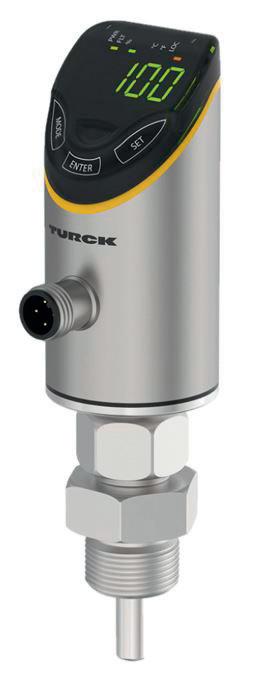
Turck Australia Pty Ltd www.turck.com.au
Profile Sensor For Welding Robots
Automated weld seam tracking in robot welding cells is a complex task in a harsh industrial environment. The micrometre-accurate detection of the guide point with different types of joint by 2D/3D profile sensors is one of the most effective solutions for this challenge. In combination with Wenglor’s uniVision software, the weCat3D MLZL 2D/3D tracker sensor is designed to combine the necessary precision and profile quality with convenient installation, integration, robustness and user-friendliness.
The Wenglor MLZL is a 2D/3D profile sensor made for welding robots, with integrated cooling and rinsing, and that enables easy and space-saving installation directly on the welding torch. Due to the small housing dimensions of 33 × 183 × 69.8 mm, the robot can therefore also operate in narrow corners.
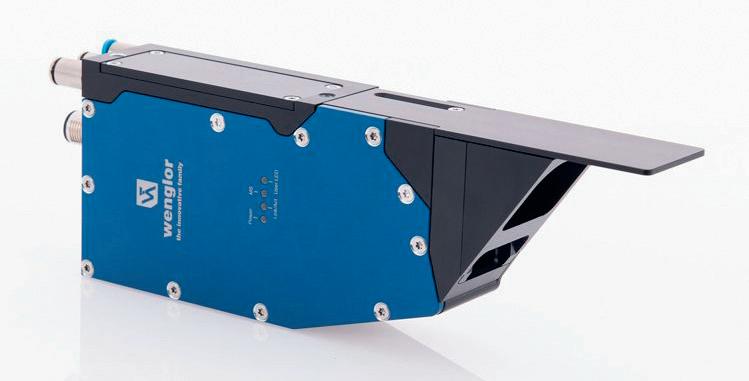
The MLZL 2D/3D profile sensor does not require any additional protective housing, nor does it need to be tilted for alignment: the design offers sufficient protection against welding spatter and ambient light.
The MLZL relies on the same laser technology of the weCat3D series and has been specially adapted and optimised for the demands of welding robots, and in particular for the complex task of optical tracking of weld seams.
Despite the harsh industrial environment, the welding sensor provides high-quality profiles for precise joint detection. Optionally equipped with a red or blue laser, users can choose between three laser classes: 2M, 3R or 3B.
Treotham Automation Pty Ltd www.treotham.com.au
CLAMP-ON ULTRASONIC FLOWMETER
In the petrochemical industry it is vital that a tanker is unloaded as quickly as possible, but this must be done within the acceptable limits of safe operation. As the rate of discharge increases, the static electrical charge in the line also increases, which increases a risk of sparking. The task is to ensure a flow velocity below 3.5 m/s to maintain a flow without sparking.
The Katronic KATflow 170 ATEX non-invasive, clamp-on ultrasonic flowmeters are designed to ensure that a variety of petrochemicals are discharged into storage as quickly, efficiently and safely as possible without intruding into the process flow. The KATflow 170 uses compact, explosion-proof clamp-on sensors to measure the flow, and through the ATEX-certified KATflow 170 base unit, the flow rate is reported to the on-site control system, which finally modulates the pumped volume. Non-invasive flow measurement means the measurements are uncomplicated while maintaining all occupational safety regulations.
All flowmeters in the KATflow series have several built-in tools that facilitate device set-up and transducer mounting. The quick installation wizard guides the meter user step by step through each application and provides dynamic feedback on signal strength and thus measurement reliability when the meter is set up. A second Audible Positioning Assistant uses acoustic signals to enable the operator to quickly find an optimal sensor positioning on pipelines.
AMS Instrumentation & Calibration Pty Ltd www.ams-ic.com.au


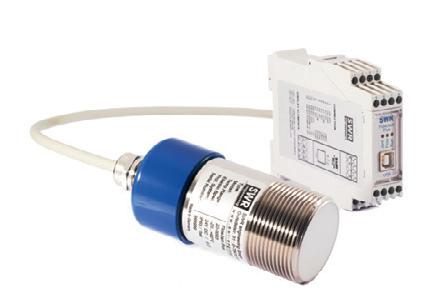

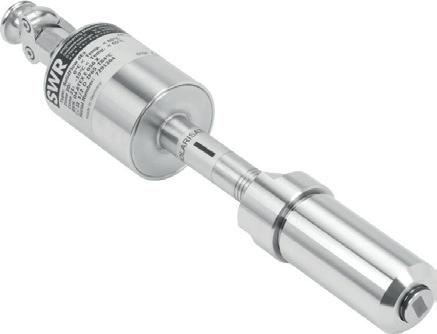
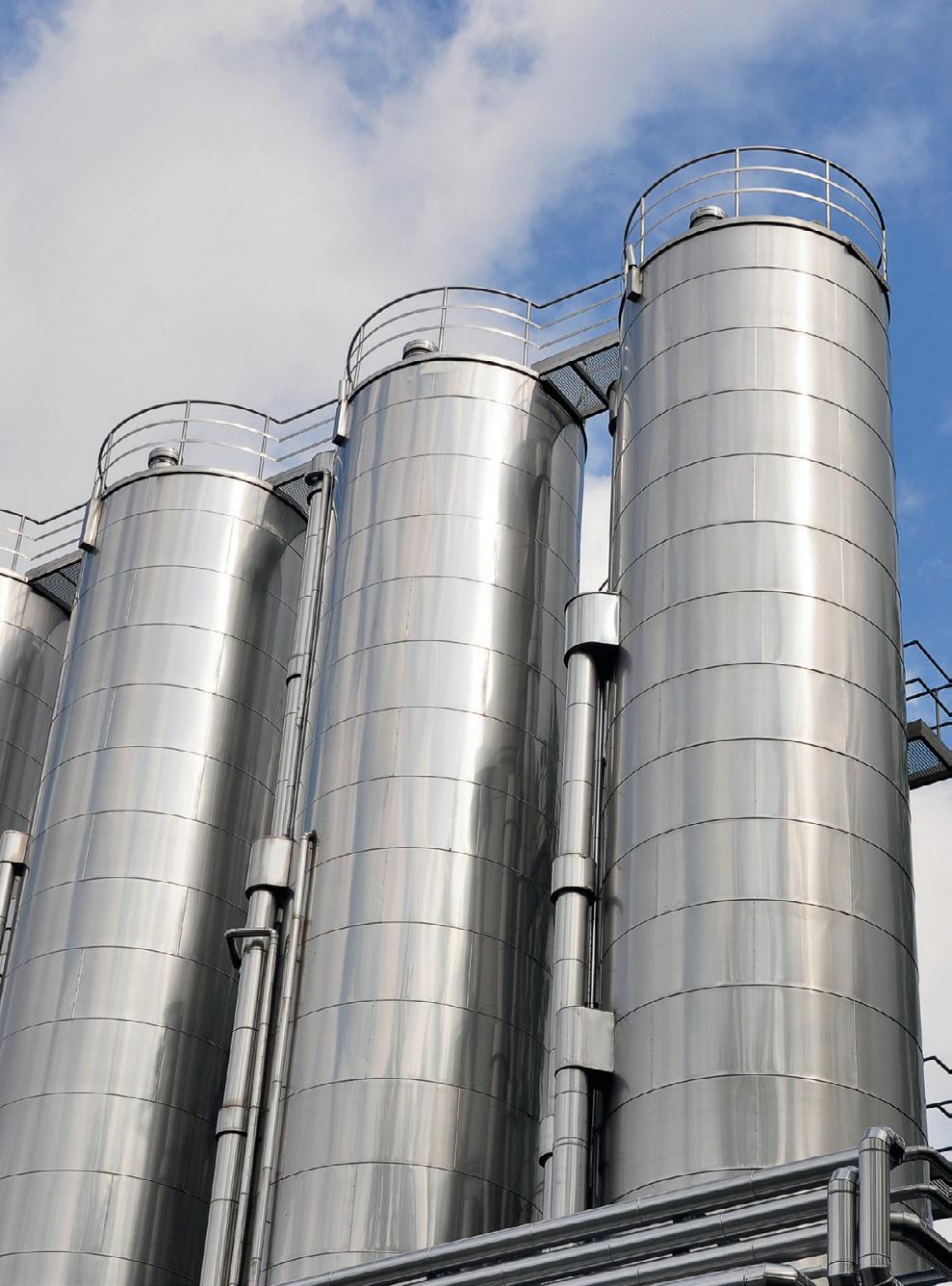
Inductive Position Measuring System
Balluff has launched the BIR (Balluff Inductive Rapid Positioning System) range of fast inductive position measuring systems.

In addition to a high repeatability and a measuring frequency of greater than 10 kHz, the BIR offers a large, adjustable measuring range and a compact, flat housing with small blind zones.
The system is designed for use in stamping presses, industrial robots, factory automation systems and packaging lines, among others. The BIR range can also be utilised in the areas of laser cutting and 3D printing.
The BIR features integrated temperature monitoring via IO-Link. The options for continuous condition monitoring, the flexible interfaces, and the simple parameterisation and diagnostics via IO-Link reduce setup and changeover times. By facilitating troubleshooting, BIR contributes to avoiding the downtime of machines and equipment.
Balluff Pty Ltd www.balluff.com.au
Radar Level And Flow Transmitters
Emerson has introduced the Rosemount 1208 level and flow transmitter series. The non-contacting radar transmitters are designed to help increase the operational efficiency of water, wastewater and process industry utility applications.
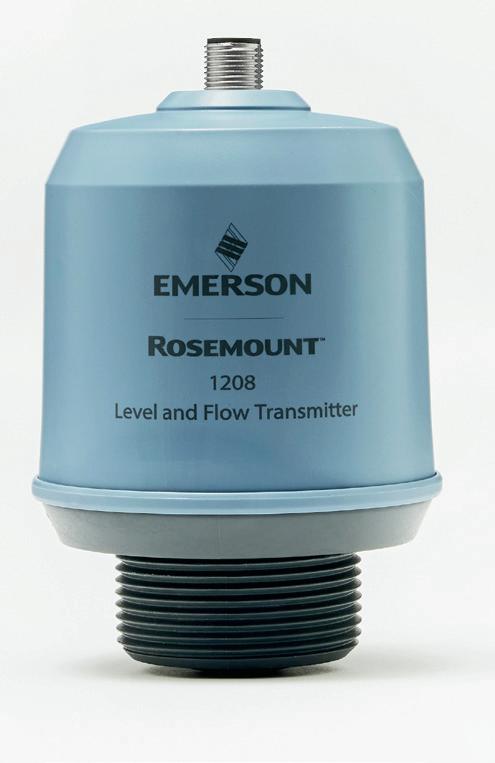
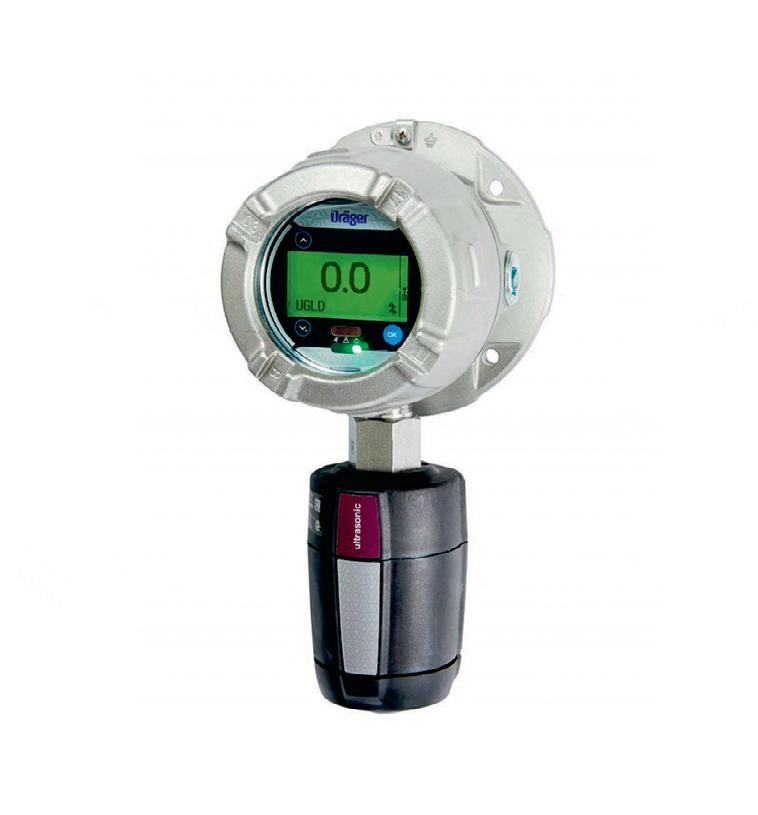
Operators in the water and wastewater, food and beverage, chemical and other process industries often deploy ultrasonic and hydrostatic devices for water monitoring applications when radar transmitters are considered too expensive, bulky or complex.
The Rosemount 1208 is an alternative, featuring 80 GHz fast-sweep frequency modulated continuous wave (FMCW) technology on a single electronic chip, which delivers measurement within a compact and more cost-effective device suitable for applications with space constraints or compliance requirements, such as water applications.
The measurement accuracy of the Rosemount 1208 is unaffected by most process conditions, including condensation and variations in pressure, temperature and density. By using fast-sweep FMCW technology and internal algorithms, the transmitter can achieve a level measurement accuracy of ±2 mm at a range of 15 m. In addition, the non-contacting design has no moving parts or calibration requirements, creating a virtually maintenance-free device that minimises manual procedures.
The transmitter is available in two models, offering different communication protocols and approvals. The Rosemount 1208A offers IO-Link connectivity as part of its hybrid communication options that also include three-wire 4–20 mA and switch outputs.
The Rosemount 1208C offers two-wire 4–20 mA and HART communication options, providing access to advanced diagnostics. Hazardous area approval enables use in areas where an explosive gas atmosphere could occur during normal operation.
Emerson Automation Solutions
www.emerson.com/au/automation
Gas Leak Transmitter
The Dräger Polytron 8900 UGLD transmitter is an early warning area monitor for detecting high-pressure gas leaks in outdoor industrial process environments. Utilising an ultrasonic acoustic sensor, it responds earlier than conventional gas detectors because it registers the sound of leaking gas instead of measuring the concentration of accumulated gas clouds. Loud process areas generate noise which is mostly in the audible spectrum. Gas leaks from pressurised vessels above 10 bar generate both audible sound and inaudible ultrasound. Since Polytron 8900 is tuned to measure in the ultrasound spectrum, it can easily identify gas leaks with a leak rate of 100 g/s in a 20 m radius circle.
The measured values on the display of the Polytron 8900 UGLD are shown from 0 to 100% of the full-scale decibel sensitivity range. The ultrasound level is immediately displayed and transmitted and allows for an easy interpretation. Alarms are configured at a specific level above a predetermined background noise level. Additionally, a time delay of up to 30 s can be set in the control system.
The Polytron 8900 UGLD is an explosionproof transmitter with a sensor housed in a galvanically isolated, intrinsically safe enclosure. The sensor is an ultrasonic microphone that is completely sealed in PVCC, making it impervious to water and dirt. Regular calibration is not necessary, but calibration is possible and easy with the offered calibration kits. The expected lifespan of the ultrasonic sensor is more than 10 years.
Draeger Australia Pty. Ltd.
www.draeger.com
Natural Gas Analyser
ABB says its Sensi+ analyser offers a reliable solution that simplifies and reduces the cost of gas pipeline operation and maintenance. It is designed to enable safer, easier and more efficient pipeline monitoring and operations through a single device that can analyse up to three contaminants (H2S, H2O and CO2) in any natural gas stream accurately and in real time. Its fast response also enables quick reaction to process upsets, thus helping to reduce waste and methane emissions.
Mitigating the risk and effects of natural gas contaminants can often present a challenge to natural gas pipeline operators, process industries and natural gas utilities, with companies required to manage numerous technologies and devices to obtain a complete analysis. This legacy approach is complex, failure-prone and expensive. Traditionally, each contaminant has often required a separate analyser, maintenance schedule and specific skill set to operate, validate and service.
ABB says that Sensi+ requires about six times less sample flowrate for its measurement than other technologies, reducing the total carbon emission of the analyser and natural gas wastage in the atmosphere.
The hazardous area compliant analyser needs only a simple wall-mount installation and process tie-in without complex system purging. Following installation and validation, ABB says the analyser will deliver fast and reliable measurements in the field without calibration.
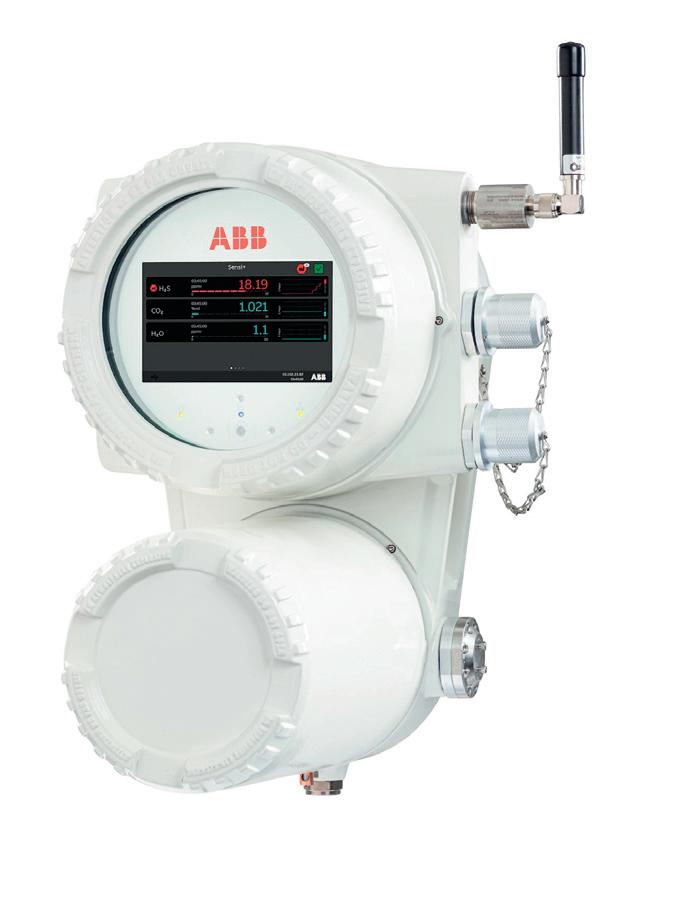
The Sensi+ analyser includes ABB’s AnalyzerExpert features that provide experts with actions and insights directly from the device. Capabilities include built-in self-diagnostics, automated laser line-locking, real-time cross-interference compensation and health monitoring.
ABB Australia Pty Ltd www.abbaustralia.com.au










